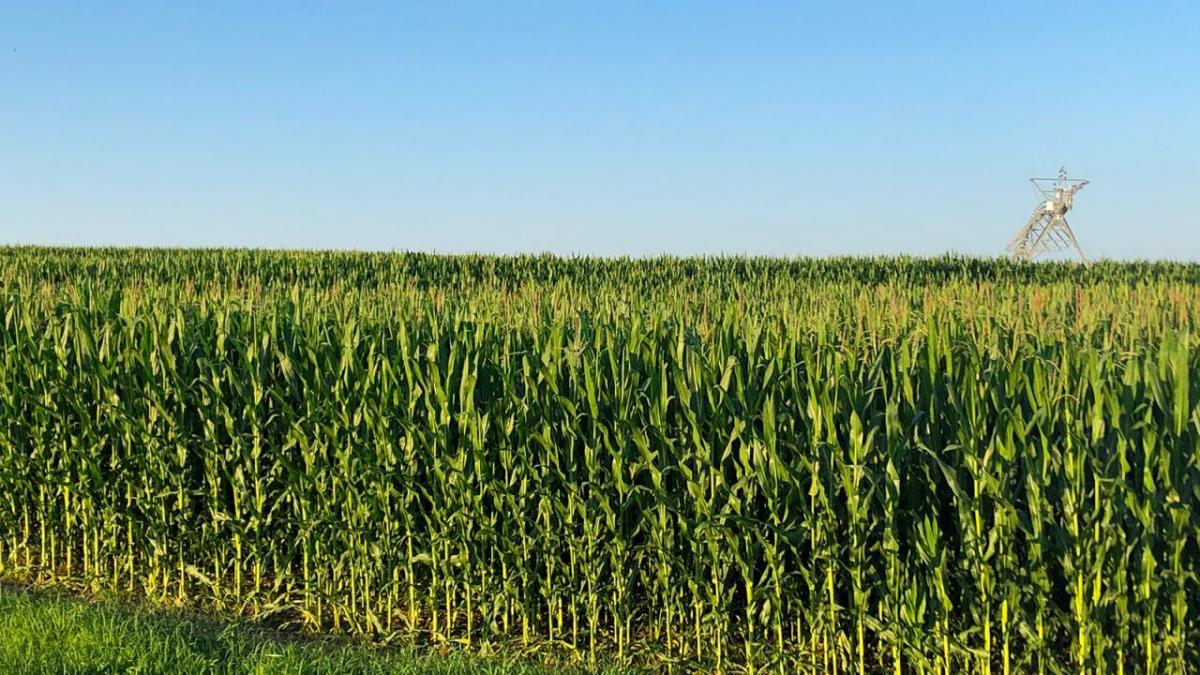The market rally following the June 30 USDA Acreage report has come and gone. So, now what? This article will discuss the price probabilities for the last half of 2020 and how to prepare for farm survival.
The period of late July into early August, when the crop size is becoming clearer, occurs when the December corn (CZ) futures price starts to take a direction, up or down. In most years, prices will tip slightly down as crop size and use end up around what was expected. Dips can be larger due to reductions in use and/or larger crops. Now is the time to clean out your bins of the remaining old crop, and start developing a post-harvest strategy for your 2020 corn.
So, where will the market end up?
The crop insurance projected price for corn was $3.88 per bushel with a volatility factor of 0.15.[1] Using the projected price and the volatility factor we can identify a range of where prices for the December corn contract (CZ20) may end up on December 1st (figure 1). With probability on the Y-axis and prices on the X-axis, we can map probabilities to commodity prices. For example, there exists around a 5% chance that the CZ20 price may be under $3 per bushel. You can see this by locating $3 per bushel on the X-axis, then finding the point where $3 per bushel intersects the red line, and then finding the corresponding value on the Y-axis, which is 6%. In other words, there is a 6% chance of CZ20 ending up below $3 per bushel. The chance of the CZ20 being below $3.50 per bushel is 30%.

What does this mean? First, the probability of the December corn futures price ending below $3 per bushel exists. We just haven’t experienced this price outcome given today’s production costs. Recent price movement is placing us closer to realizing this low probability outcome, but we are not quite there yet.
We don’t need to rely on experience to find out what happens if you jump out of an airplane at 30,000 feet. We know the laws of gravity. The price probability distribution exists in a theoretical world and the rare events suggested by the approach may never be realized. But if low prices come to be realized, can you survive? Experiencing low prices pressures farm survival and therefore one must respect the laws of prices and know what to do if they come.
More importantly, what are you going to do about it?
With a 6% chance of futures markets below $3 per bushel, and 30% chance of below $3.50 per bushel, you need to write down a proactive plan now. Although the basis across the state has been stronger, cash prices are likely to be at or below $3 per bushel on Dec. 1.
Here are some questions you should ask yourself as you prepare for the rest of the year:
- Can you do some more pre-pricing before harvest?
- How long can you survive when cash prices are at or below $3 per bushel?
- How much cash do you need between now and spring?
- What is your true cost of storage? Don’t forget to include interest, overhead and crop deterioration expenses.
After answering these questions for yourself, write a proactive grain marketing plan that sets realistic price goals and sale deadlines for the 2020 crop. Share your plan with someone else (a spouse, banker or merchandiser) to help keep you accountable to your plan.
